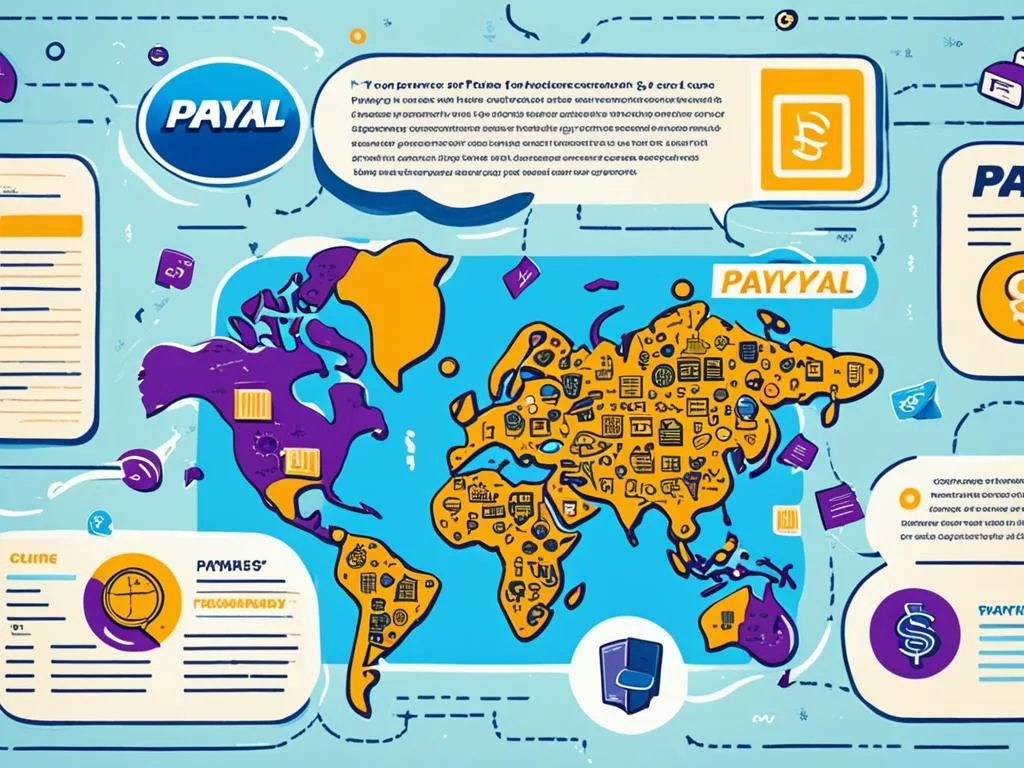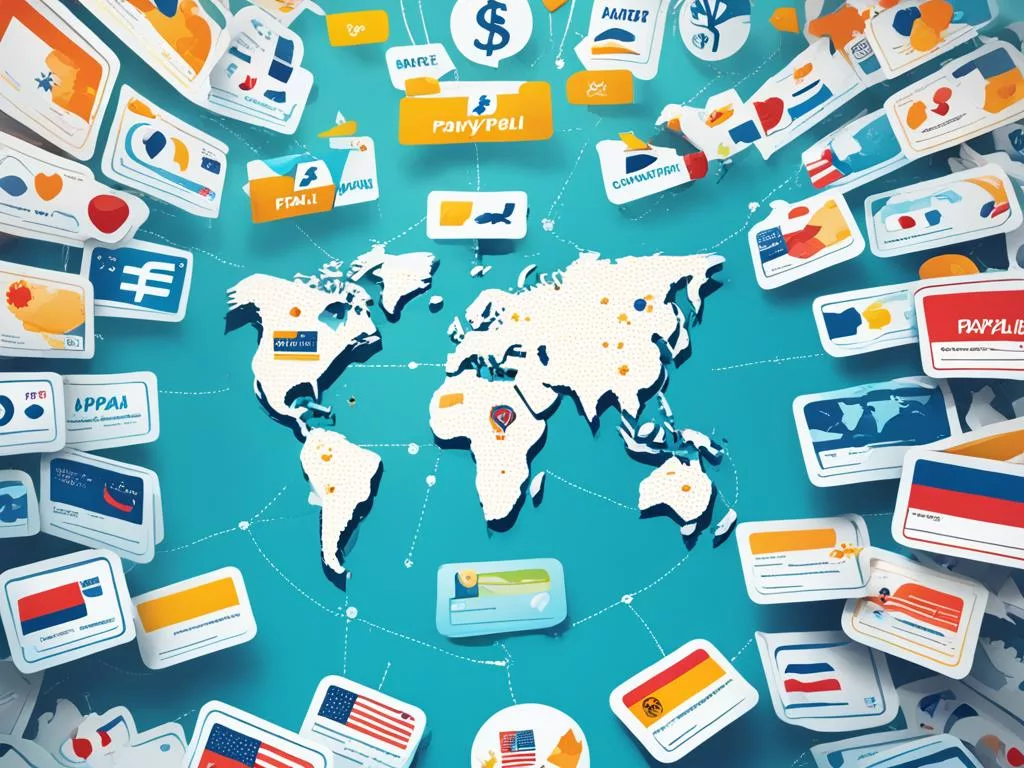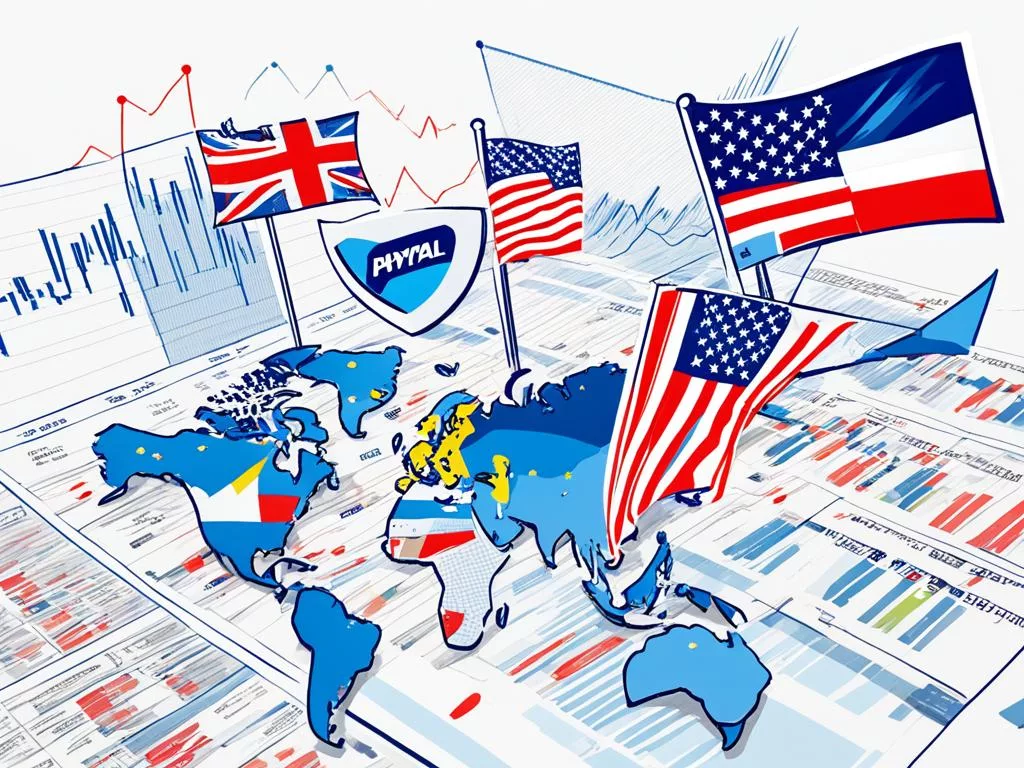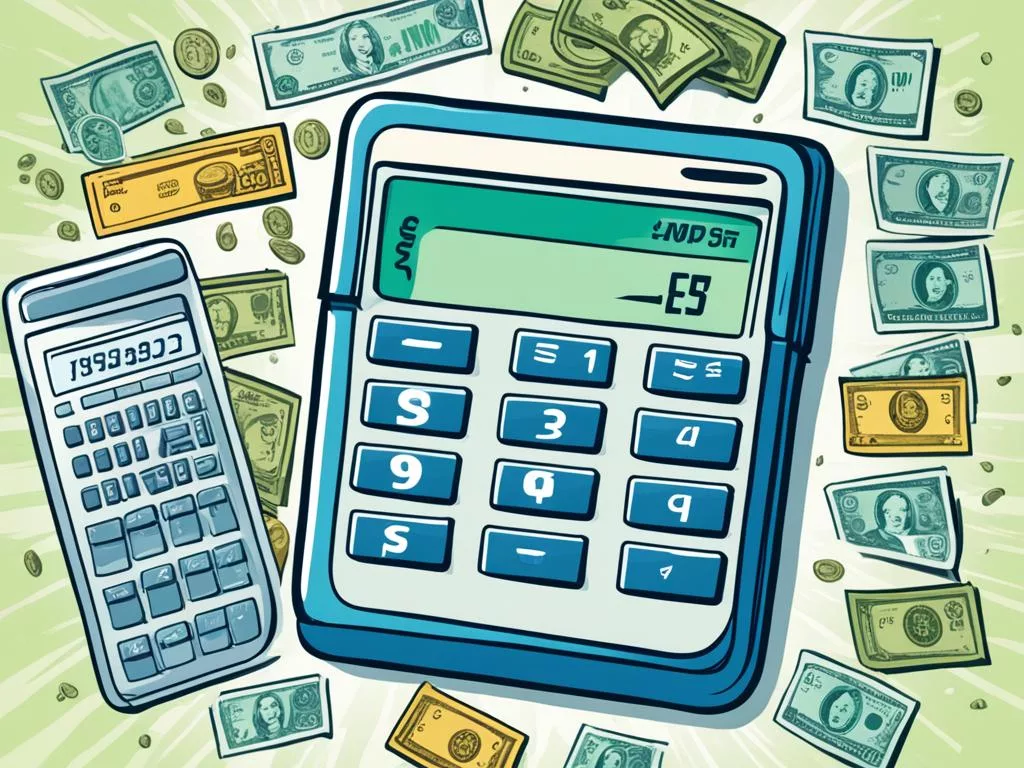Each time I send money across borders, I’m reminded of the complex dance of numbers and rates, a rhythm dictated by cross-border payments and the PayPal fees that accompany them. It’s a universal experience for those of us navigating the nuanced world of international payments, where the convenience of clicking a button is matched only by the intricacies of currency conversion costs. Like many, I’ve been on both sides, as sender and recipient, and I’ve felt the pinch of PayPal transaction fees that seem to chip away at the hard-earned money we try to share or invest abroad. It’s personal, every cent representing the effort behind the earnings, every fee a reminder of the price of distance. As we dig deeper into the specifics of these PayPal fees, it becomes clear that knowledge is power, and understanding the cost of moving money can make all the difference in our financial lives, no matter where we, or our money, may roam1.
Breaking Down PayPal’s Fee Structure for International Transactions
As an avid user and advocate for PayPal’s services, I’ve navigated the intricacies of PayPal charges when it comes to international transactions with keen interest. Navigating the PayPal exchange rate and understanding the nuances of sending money overseas can be perplexing, but awareness is key. The fees incurred during these processes can vary significantly, expressing the importance of comprehension for both businesses and individuals alike.
When I examine PayPal’s fee structure, it becomes apparent that the company employs a range of payment processing rates for international dealings, starting from 1.9% to 3.5% of each transaction, alongside a fixed fee that ranges from 5 cents to 49 cents2. Notably, a standard $100 transaction via PayPal attracts fees hovering between $2 and $3.992, showcasing that PayPal currency conversion fees can have a substantial impact on the overall sum transacted.
Adding to this, the cost variety does not end there. PayPal further diversifies its fee structure based on the type of service utilized, such as digital payments, standard card payments, or alternative payment methods, each coming with its unique per-transaction rates and fees2. For those engaging in international transactions, it’s not just about the per-transaction fees; one must also consider the currency conversion charges that realign with the PayPal exchange rate applied at the time of the conversion2.
While PayPal provides an array of native services, it also offers optional fees for added safeguards, like Chargeback Protection and Advanced Fraud Protection, giving users a customizable experience based on their risk appetites and security preferences2. And even as PayPal positions itself competitively, alternative payment processors like Stripe, Square, and even Google Pay present their own sets of fees and features that beckon for comparison based on the business’s specific needs23.
For instance, comparing card-present transaction fees uncovers that PayPal’s are competitively set at 2.29% plus 9 cents, as opposed to Square’s 2.6% plus 10 cents3. Moreover, international transactions with PayPal carry an additional 1.50% fee versus Square, which does not charge extra for these transfers3. The broader assortment of business tools and features, as offered by Square, which includes tip management and more versatile employee management options, might tilt the scales for some users depending on their operational style and payment preferences3.

This intricate comparison between PayPal, Square, and other processors underscores a fundamental truth about payment processing – rates and fees alone shouldn’t dictate one’s choice of service. I have found that factors such as ease of use, integration capabilities, and a platform’s compatibility with customer preferences play significant roles in making an informed and strategic decision2.
Ultimately, when deliberating over services for sending money overseas, the emphasis should always rest on the overall value offered by the payment processor. This comes down to balancing efficiency, security, and costs, a financial triad that requires careful consideration to ensure that the selected service aligns perfectly with one’s international business activities and currency exchange needs.
What the PayPal Fees are for International Payments
As an avid user and proponent of seamless international payments, I’ve taken a keen interest in the intricacies of PayPal’s fee structure, particularly when it involves cross-border transactions and currency conversions. The company’s expansive reach of over 400 million active users worldwide makes it one of the most relied upon financial platforms for personal and commercial transactions4.
Delving into the commercial aspect, we see a tiered fee system based on transaction amounts, where sending less than $5 will cost you $0.49, while amounts over $1000 will attract a fee of 1.50%5. It’s important for businesses to keep track of these fees, especially when utilizing the PayPal fee calculator to determine the cost-efficiency of cross-border payments’ involvement in their financial operations52.
In the realm of currency conversions, the fees commence at $0.49 for amounts up to $9.99 and escalate according to the conversion amount, leveling to a more cost-effective rate between 1.75% and 1.45% for higher amounts, signifying the utility of the PayPal fee calculator in managing expenses when dealing with international payments5.
Cryptocurrencies, riding the wave of digital finance innovation, come with their own set of rules on the PayPal platform. Receiving a crypto transfer is free of charge; however, moving your digital assets outside PayPal attracts a network fee, highlighting the importance of understanding the facets of PayPal transaction fees in the burgeoning crypto landscape5.
In contrast, personal transactions provide some relief with no fees for using a PayPal balance or bank account, while opting for a card transaction triggers a 2.90% fee along with a fixed rate. These PayPal transaction fees vary for international payments, sometimes capturing up to a 5% fee with specified upper and lower bounds5.
- Domestic Personal Transactions: Free with PayPal balance or bank transfer, 2.90% + fixed fee for card users5.
- International Personal Transactions: As high as 5%, subjected to minimum and maximum thresholds5.
- Cryptocurrency Transactions: No fee for receiving, variable network fee for external transfers5.
Lastly, for currency conversion and international transactions, a conversion spread of 3.00% to 4.00% is typically applied, underlining the essential nature of the currency conversion cost in the PayPal ecosystem5.
| Transaction Range (USD) | Commercial Fees | Conversion Fees |
|---|---|---|
| $1.00 – $4.99 | $0.49 | $0.49 |
| $5.00 – $24.99 | $0.99 | $0.99 |
| $25.00 – $74.99 | $1.99 | $1.99 |
| $75.00 – $200.00 | $2.49 | $2.49 |
| $200.01 – $1000.00 | 1.80% | 1.75% |
| $1000.01 + | 1.50% | 1.45% |

Expanding my understanding of PayPal’s rate structure has been essential in managing my international payments efficiently. Such knowledge is particularly beneficial when compared to other online payment gateways, as each offers varying transaction fees. This comparison could ultimately guide the best choice for one’s specific needs in the case of significant international money transfers4.
Navigating PayPal’s Costs: Factors Affecting Your Fees
Whether you’re running a global enterprise or sending money to loved ones overseas, understanding the factors that influence PayPal fees is essential in controlling your international payment costs. When contemplating international transactions, PayPal fees emerge from several layers of charges, including PayPal currency conversion fees, which could significantly impact the final amount either you pay or your recipient receives.

Direct transfers to a PayPal account are generally quick and convenient but attract a fee of 5% for international transactions, sticking within the bounds of $0.99 to $4.99 USD6. On top, using a credit or debit card to fund transactions tacks on a funding fee of 2.9%, alongside a fixed fee determined by the currency used6. You might confront additional costs if you undergo a PayPal currency conversion, generally carrying a 4% charge—a tipping figure in high-value transactions6.
For those favoring PayPal’s Xoom service for remittances, be wary of the exchange rate markup, which directly inflates your costs. PayPal’s promise of competitive exchange rates hinges on the PayPal exchange rate, which is revised daily based on their banking connections—imperative intel for those seeking the best rates for sending money overseas.
| Service | Users | Currencies Supported | International Transfer Fee | Transfer Limits |
|---|---|---|---|---|
| PayPal | Over 426 million7 | 258 | Up to 5%6 | $60,000 verified users8 |
| Venmo | Over 83 million8 | U.S. only8 | 1.75% Instant Transfer8 | $7,000 weekly spending8 |
It becomes significantly apparent that the allure of no monthly fees, like those offered by Wise’s Multi-Currency Account, might offer a reprieve from PayPal’s stack-up of costs when making international payments8. Balancing these against limitation on transactions, such as PayPal’s cap of up to $25,000 for a single transaction, unveils why savvy senders must astutely navigate these financial waters7.
As I delve into strategies for mitigating these fees, consider alternatives such as CurrencyFair, which boasts the potential to transfer funds up to 8x cheaper than traditional banks, stretching your financial reach across over 150 countries8. Understanding and comparing platforms can lead to substantial savings, making the knowledge of each service’s user base, supported currencies, and fee structure you engage with paramount for sending money overseas with financial acumen.
Analyzing the Actual Costs: PayPal Fee Calculator in Action
As a seasoned user of PayPal for both personal and business transactions, I’ve often encountered the need to understand the financial implications of using their services, especially when it comes to cross-border payments. The PayPal fee calculator emerges as an indispensable tool, meticulously designed to provide precision in financial planning by accurately estimating transaction fees, including those pesky PayPal charges that can accumulate unnoticed.
When I initiate an international payment via PayPal, I’ve noticed that the PayPal fee calculator simplifies the process seamlessly. It requires just a few inputs: the transaction amount, the recipient’s country, and whether I need to know the total fees or the net amount after fees have been deducted. Like magic, the calculator delineates the PayPal transaction fees along with any applicable currency conversion fees. This technological marvel enables me to minimize errors and aligns my financial strategies with the true costs of PayPal’s services.
Having a myriad of options such as Wise, SoFi, and EverBank, which offer competitive exchange rates and interest yields, it becomes pivotal to weigh the merits of each platform before committing to one1. For instance, utilizing Wise could significantly reduce upfront fees, as they generally charge less than 1% of the transfer amount when funded through a bank account1. On the flip side, PayPal’s own rates, when handling various transactions like online credit card processing or instant transfers, may present a contrasting fee structure with distinctive benefits or drawbacks depending on the transaction type3
When I delve into the finer details of PayPal’s fee composition, I’m faced with a landscape of fees that vary based on the funding source, transaction type, and end-recipient engagement. An in-person card transaction incurs a fee of 2.29% plus 9 cents, while online credit or debit card transactions nudge up to 2.59% plus a 49 cent flat fee. When opting for online non-card transactions, online invoices, or making direct PayPal payments, I encounter a fee of 3.49% plus a 49 cent flat rate3
Comparatively, other money transfer services like MoneyGram or Western Union exhibit a different range of upfront fees and rate markups that could either be substantial or minimal, depending on the funding method and the specifics of the transfer1. Hence, instituting an informed comparison becomes a step I cannot afford to skip. Should I anticipate a $45 cost for a bank wire transfer from the U.S. or does PayPal offer me a more viable financial avenue?1
| Service Provider | APY/Cost | Minimum Balance | Transfer Fees | Exchange Rate Markup |
|---|---|---|---|---|
| SoFi | 4.60% APY | N/A | N/A | N/A |
| EverBank | 5.15% APY | $0 | N/A | N/A |
| PayPal (Online Card Transaction) | N/A | N/A | 2.59% + $0.49 | N/A |
| OFX | N/A | N/A | $0 | 0.5% to 1% |
| MoneyGram | N/A | N/A | Varies | >3% |
As I contemplate a financial landscape where PayPal’s shares have seen a notable decline2 and the introduction of sanctions on blockchain transaction services has caused ripples through the financial sector2

Undoubtedly, my foray into comprehending and utilizing the tools at hand, such as the PayPal fee calculator, is an ongoing learning experience. It reassures me that when confronted with PayPal transaction fees or the bewilderment of currency conversion costs, the ability to calibrate my financial instruments is but a few clicks away.
Strategies to Minimize PayPal Fees on Global Transfers
As I navigate the complexities of international transactions, my goal is to minimize PayPal fees without compromising the efficiency of my global payments. With a discerning eye on the forecasted boom in cross-border payments, projected to account for a third of all e-commerce spend by 20289, it’s clear that adopting strategic measures is not just beneficial, but necessary. Utilizing PayPal’s balance for funding transactions allows me to sidestep additional credit or debit card fees10, while harnessing the power of PayPal to improve checkout conversions significantly—by an average of 33%, as evidenced in a recent study9.
I assess the preferences of my international clientele, noting that a staggering 78% of German shoppers, 71% of Australian shoppers, and 66% of UK shoppers stress the importance of having their preferred payment method offered by merchants9. In response, I consider the cost-effectiveness of bundling multiple transfers into larger amounts, thereby taking advantage of PayPal’s cap on fees for direct account transfers. Simultaneously, by integrating PayPal costs into my pricing strategy, I manage to offset some of the burden these international transactions place upon my business’s resources.
My strategy is to stay well-informed of the competitive landscape, evaluating alternatives such as Revolut, which presents the appealing real mid-market exchange rate for international transfers, and Cash App, with its absence of hidden fees for domestic transactions10. Through my continuous efforts to innovate and adapt, I ensure my operations are aligned with evolving financial practices, making the most out of PayPal fee mitigation and enhancing profitability in an increasingly interconnected e-commerce sphere.
Source Links
- https://www.investopedia.com/articles/personal-finance/112415/moneygram-vs-paypal-vs-xoom-who-has-lowest-fees.asp
- https://www.nerdwallet.com/article/small-business/paypal-fees
- https://www.forbes.com/advisor/business/software/square-vs-paypal/
- https://www.shopify.com/blog/paypal-fees
- https://www.paypal.com/us/webapps/mpp/paypal-fees
- https://www.bankrate.com/finance/credit-cards/guide-to-using-paypal/
- https://tipalti.com/mass-payments-hub/paypal-mass-payments-guide/
- https://www.forbes.com/advisor/money-transfer/venmo-vs-paypal/
- https://www.paypal.com/us/brc/article/global-differences-in-payment-methods
- https://www.monito.com/en/wiki/paypal-fees

